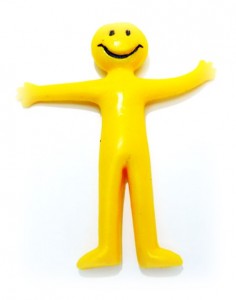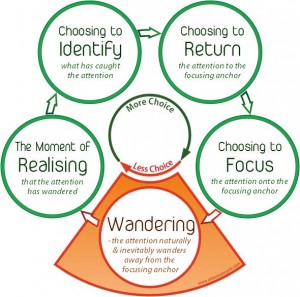Attention Cycle Diagrams & More – 2019 Update
This page is a ‘landing place’ for copies of the material we share at different events.
The materials shared here are intended for unrestricted use and distribution by mindfulness teachers in their work – we just ask you attribute the work to Integrated mindfulness and provide a link back to this either this page or to www.mre.re. Permission is needed (and usually given) for commercial uses or if these resources are included in materials being sold in any format.
Newsletter
If you would like to receive an emailed copy of our occasional newsletter then click here (we never share your email). The newsletter includes information on updated resources and events we are planning. You can find previous newsletters here.
Body-Based Practices (AKA Body Scans)
Our experience of working with people who have intense body-related experiences including trauma, pain, and health-related issues have led to 3 main adaptions to more standard body-based practices: ‘body scans’ as they are often called (but we are experimenting with other names as ‘body scan’ sounds a rather medicalised phrase and that has other meanings in medical contexts that may not be helpful associations).
1. Deconstructing Body-Based Practices. Key capacities to cultivate through body-based practices include embodied awareness and attentional skills (focusing in, widening out, engaging and disengaging, returning from wandering). The embodied awareness could be met, for example, through mindful walking practice (we would suggest normal walking at first instead of zombie-walking!) or through the bean bag practice (see below). The attentional skill development could also be met, for example, through the Sound Scan practice (see immediately below). Once there is a sense of familiarity and safety with these separate elements, a body-based practice such as below could be introduced.
2. Body-Based Practice with Movement. A simplified and mindfulness-informed version of a progressive muscle relaxation type practice can be very helpful. The movement helps keep attention engaged in the vivid sensations of movement rather than the emotional association that may come to the foreground with more passive Body-Based Practices. See here for a live recording or two of this approach which has movements of feet and hands as hopefully more neutral starting places for awareness and a brief ‘muscle loosening’ sweep through the whole body. You could consider just doing the movements the first time then include a sweep once the movements have become more familiar.
3. Looped Body-Based Practice. This is a version we find really helpful for ‘baking in’ the sense of choice to body-based practices. Essentially it starts with establishing a ‘Home-Base’ anchor: somewhere to take the attention if some aspect of the Body-Based Practice is too intense or difficult. With this established there is then a three chunk practice with a leg loop, arm loop and torso loop with a break between the chunks to do movements mindfully (such as stretching, coughing, changing position, or having a sip of water). One of the great things about this version is that sleeping tends to be reduced and the sense of safety through choice is enhanced. There is a guide with brief teacher’s notes here (so not designed for participants) and a recorded version here. The same principles in this looped version can be applied to any body-based practice:
- Integrate choice into the whole practice guidance: invitations not instructions… consciously choosing to disengage and being attentive to doing so is a mindful practice.
- Establish a Home Base anchor that can be returned to at any point: suggest different possibilities for this anchor and practice these first.
- Break the body-based practice into chunks with mindful movement during these ‘breaks’. Consider doing a ‘test-drive’ with a just a small area of the body first: foot to knee and or hand to elbow. Inquire after this. Then do more of the whole body-based practice. There is no rule that says the whole body must be included: leaving an area out gives scope for inquiry into this experience.
- Ensure your inquiry welcomes unpleasant experience or disengagement, especially if there is an initial run of positive experiences that can be isolating/shaming for someone who has had a difficult time. One way in is to focus on mind wandering, physical discomfort, and boredom and ask specific closed questions to whole group about these to get a group feel. Questions like ‘I would find it really helpful to know if anyone had any difficult moments during that practice?’ can indicate your interest in all experiences.
Overall, the key thing to consider with any mindfulness practice is what capacity do you wish to offer a learning experience to cultivate and, based on this, what practice best suits the needs for the individual or group given their existing capacities. If you are not sure about their existing capacities, your initial practices would be safer if their aim is to establish you and the individual’s or group’s knowledge of their capacities as a baseline from which further practices can be appropriately offered. The Cultivation of Key Capacities Chart below offers one way we have been exploring how to frame this process of cultivating capacities.
At a training workshop a participant fed back how medicalised the term ‘body scan’ is and that in the context of their cancer care work, many participants have significant traumas associated with the medical body scans they have received. For this reason we are exploring other terms for body scans: hence ‘body-based practice’ as this just describes what is the focus of the practice.’ Better suggestions are most welcome!
SoundScan Practice
The Sound Scan Practice helps us be selective about what we chose to engage with from what is streaming through our awareness at any one time. Some things we can chose to engage with, while other things we can just let flow through. These are based on Adrian Well’s really helpful Attention Training Technique. The audio files here replicate his version with wildly chiming bells but also offer a less intense version with guitar sounds instead of the bells (the bells, the bells…).
There is a playlist with 5 and 10 minute versions here: https://soundcloud.com/resilienceplus/sets/soundscan and a practice guide here.
Mindful Movement with Beanbags
We have been inspired by Leigh Burrow’s use of beanbags as a mindful movement practice. She describes her approach to using them and their relevance to safe mindfulness teaching in her important book: Safeguarding Mindfulness in Schools and Higher Education.
We have recorded a video in 4 parts that shares what we have been learning so far in using beanbags for mindful movement:
- Part 1 provides an overviews of using beanbags for mindful movement (click here for the YouTube link)
- Part 2 demonstrates a sitting version of a mindful movement practice using beanbags (click here for the YouTube video)
- Part 3 demonstrates a standing version of a mindful movement practice using beanbags (click here for the YouTube video)
- Part 4 briefly discusses different types of beanbags and infection control issues (click here for the YouTube video)
There is a detailed guide available here as a pdf.
We would welcome your comments and reflection and experiences of using beanbags for mindful movement. You can also help us by clicking the ‘Subscribe’ button associated with our videos as we can unlock helpful Youtube functions when we have enough subscribers. It also means you can easily access subsequent videos we produce.
Using Objects as Focusing Anchors
There is a 35 minute video that outlines using different objects here.
The ‘Using Objects as Focusing Anchors‘ information sheet is available as a pdf here.
(Another object (not on this handout) that can be great to use are ‘Chinese finger traps’ – a great metaphor for struggle as to be released you need to bring your fingers together, not pull them apart)
Cultivation of Key Capacities Chart. This is a reflective tool we are developing that helps consider how to adapt mindfulness practices to meet individual need: it is particularly relevant when working with people with trauma experiences. The pdf is available here. This chart is something we explored in the 2017 ‘Minding the Gaps‘ conference mentioned at the end of this page. Please note that this is not a ‘how to guide’ but rather a reflective tool to raise questions about why we are offering this practice in this way at this time to these people. There will be endless valid exceptions to the trends outlined in the chart: the point is that these exceptions are considered in the process of highlighting and clarification.
Linked to this consideration of capacities is a summary of our experience of issues that can influence safe learning experiences – the document ‘Considerations for Safe Practice‘ is available here.
Attention Cycle Diagrams
Sharing these diagrams was the start of this page – hence the website’s linking name of www.attentioncycle.com.
We find the Attention Cycle Diagram below really useful as a teaching resource – hence naming this website after it….
Our 2019 version uses ‘Take In’ as a variation on the Acknowledging step below: this is available here.
There are 2 versions here: one with choosing to ‘acknowledge‘ the other with choosing to ‘identify‘ in the top left circle.
‘Acknowledge’ may have more of a sense of holding in awareness and therefore may be a higher level skill than ‘identify’ which may have a more active thinking process… but could be argued in other ways too. In getting familiar with what hooks the attention it can be helpful to really emphasise noticing what has caught the attention and ‘identify’ fits well with this. Different groups seem to connect with one word more than another, hence sharing both.
Click the image to see a higher resolution version or right click to save a copy to your computer: ‘Identify‘ on the left (or top depending on screen layout), ‘Acknowledge‘ on the right (or bottom).
The ‘Identify‘ pdf handout version of this is here and the ‘Acknowledge‘ pdf version is here.
There is a leaflet version with a mindfulness definition etc.: the ‘Identify‘ version is available here. and the ‘Acknowledge‘ version is here.
Free and shareable audio tracks of a range of mindfulness practices are available here: www.resilience.plus. The looped body scan may be of particular interest as it addresses common experiences of difficulty with practicing body scans. There is also a mindful muscle release practice we are developing that focuses on simple feet and hand movements and is generally very well received by participants and seems very safe.
As we have said at the start, these resources can all be freely used with clients and in teaching and training provided the materials are attributed to us and they are not being commercialised without permission.
We welcome feedback on your experiences using them.
Warm wishes
Tim & Annette
P.S. We hold an annual free conference at the University of Salford bringing together different practitioners and researchers around the theme of adapting mindfulness to different populations.
You can always find details of the conference here: www.mindingthegaps.uk
You will at some point find powerpoints from the June 2019 conference linked to at www.mindingthegaps2019.eventbrite.co.uk
You can find the powerpoints from the first conference in 2016 here www.integratedmindfulness.com/mindingthegap2016
The powerpoints from the 2017 conference are available here: www.integratedmindfulness.com/mindingthegap2017



